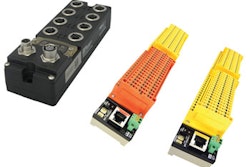
All consumer packaged goods are marketed under a brand name. That’s a truth that conveys an inextricable link between packaging and branding, but not necessarily the strategic scope of that link. Packaging, however, has considerable prowess as a brand-builder and always should be a tool in brand strategy. And whereas packaging has been defined in a number of ways in this and other publications, a definition of a brand might be in order (despite the certainty that readers are familiar with the concept).
Regarding what is a brand, there’s no single definition that enjoys Webster-like acceptance. This is hardly surprising, given that a brand embodies tangible and intangible qualities. What we can say with some certainty is that a brand encompasses the following: name (including fonts and colors); symbols (i.e. logos, trademarks, and icons); promises (expressed and implied); and consumer experiences, perceptions, and expectations. These qualities bestow upon a product an aura, an image, and over time, a reputation. Together, these account for brand equity. To be fair, the most quoted definitions of a brand vary, but they don’t contradict one another, nor do they contradict this simplification: the brand is a company’s most valuable asset.
Brand strategy, therefore, is arguably the most important component of competitive strategy—the latter being how a company gains and defends an advantage vis-à-vis its competitors. And although brand strategy needs to be pursued along multiple paths, the pursuit can be divided into two realms: establishing the brand and leveraging the brand. Packaging can make sizable contributions to each.
Brand-new
After a brand is launched, eventually—for better or for worse—it will represent everything that consumers assign to the underlying packaged product. That’s the strongest argument for managing product development and packaging development as integrated tracks rather than as parallel tracks, or worse, as sequential tracks. Packaging, through graphics, communicates the brand name and related images; but, that’s just for starters. Packaging also should elevate the product above “me-too” status, through benefits valued by consumers. Those benefits can relate to ease-of-use, for example; but whatever their nature, they’re most valuable when they are innovations, especially ones that can be protected by patents.
Newness also can be a concern down the road. An established brand that’s otherwise solid still might have grown a bit stodgy and thereby needs updating. When the called-for solution is cosmetic, package redesign is a tried-and-true approach. But even then, a package redesign never is a routine project. Nor should it be left to the Muses, for it entails a multitude of considerations that must strike the optimal balance between instilling newness while preserving the core persona of the brand.
Then there’s newness for newness’ sake, a misguided quest too often undertaken to compensate for fundamental deficiencies in the product. In illustration, if a product lacks efficacy, jazzier packaging won’t fix it. The same goes for any other serious shortcoming, the lesson being that the product should embody a difference (product positioning), one that’s relevant to consumers yet simple enough to be readily perceived and understood. When that’s the case, packaging can communicate those qualities, to the benefit of the brand.
Going far but not too far
When a brand has equity, the advantages of parlaying it, whether inter-category or intra-category, are well-known—at least in theory. Under an established brand, new launches potentially have a population of consumers that already are favorably disposed, because of experience with the brand. The consumer’s perceived risk is lessened; therefore, the company’s launch-related costs (most notably marketing and promotional) are reduced. Conquering new territories for a brand is achieved by product-line extension and by brand extension.
Product-line extension is about lending variety to the fulfillment of a given consumer want or need. Are you hungry? Do you like soup? Are you tired of our same offerings? Try our newest variety. That’s the basic idea. Often decried as one of the lesser imaginative things that marketers do, product-line extensions, nonetheless, aren’t sure-fire. Product lines undergo pruning, maybe as often as they undergo extension.
The packaging portion of product-line extensions might seem simple, in that the structure and graphics that identify the brand and the category already exist, only necessitating the identification of the particular variety. There are other times, however, when marketers deem it better to give a line extension its own packaging. Such is often the case with OTC pharmaceuticals, differentiated by symptoms. Even so, consumers have been known to complain that, while the packaging is distinct across extensions, there’s too much overlap across symptoms and/or inadequate information for a confident matching of symptoms to product.
Another type of product line extension involves different product forms. A product reformulated in concentrated form is one example. Similarly, a product might be extended to different forms across the spectrum of wet, dry, solid, liquid, power, granular, cream, lotion, spray, and so forth. Different product forms require different packaging in terms of materials, containers, and technology that might thwart a company’s plans, unless that company acquires the requisite capabilities, either in-house or contracted. Even when package type remains the same, product line extensions can be based on other packaging parameters. Size is one example, from single-use to multiple-use, from regular to economy—they go by different designations.
The brand itself can be extended, with a concomitant increase in the potential risks and rewards. As for risks, a brand that's dominant in one product category nonetheless enters a new product category that already has a leader (or leaders); therefore, both the product and packaging portions of the offering should, at least, be equal to the best in the category, if the prestige of the brand is to serve as the tie-breaker. The overall reward is an increase in the brand’s presence on the competitive stage; and, an always-appreciated reward is increased revenues, resulting from increased sales, which in turn can be increased further if the new product category provides higher margins.
Brand extensions, more so than product-line extensions, are more likely to involve packaging that’s different than what a given company may be use to. From another perspective, packaging won’t carry the day if the brand extension has gone too far afield; the extension has to be credible in terms of fit.
So it is that packaging can be a limitation or an assist to brand strategy; therefore, the discipline of packaging should be represented among the high-level personnel who map out that crucial strategy. Years ago, I coined the term “rubber brand” to describe a brand that can be profitably stretched, be it by product-line extension or by brand-extension. In that regard, packaging can be a powerful elastomeric agent.
Sterling Anthony is a consultant, specializing in the strategic use of marketing, logistics, and packaging. His contact information is: 100 Renaissance Center- Box 43176; Detroit, MI 48243; 313-531-1875 office; 313-531-1972 fax; [email protected]; www.pkgconsultant.com


























